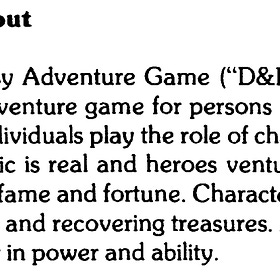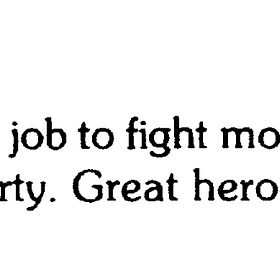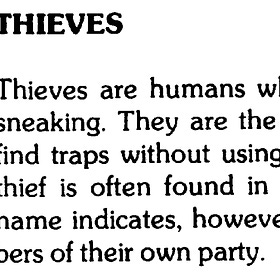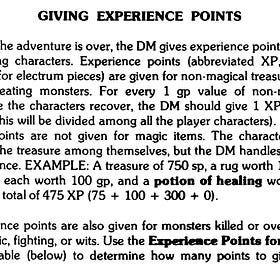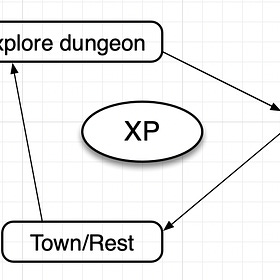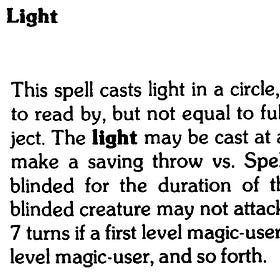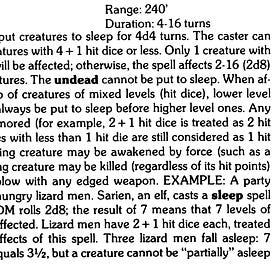Motivations in Game Design Economies Table of Contents
A post to help you navigate our alchemical laboratory
Here I’ve collected all 10 installments of our Motivations in Game Design Economies series, in which we talk about how the design of the Dungeons & Dragons Basic Set shapes its players’ behaviors.
The Incentive to Kill in Dungeons & Dragons
Welcome to the first series on Ludological Alchemy, Motivations in Roleplaying Game Economies. This idea began as a footnote in another piece that metastasized into this 10-part series. In it we discuss how games can affect the behavior of their players, using
What Is the D&D® Game All About?
Welcome to Part 2 of Motivations in Roleplaying Game Economies. You can find Part 1 here. In this series we discuss how games can affect the behavior of their players, using Dungeons & Dragons: Basic Set (1981, Ed. Tom Moldvay). Part 2 examines the text of the game and attempts to measure it against player expectations of the game’s systems. Further ins…
Fighter X in the Caves of Chaos
Welcome to Part 3 of Motivations in Roleplaying Game Economies. You can find Part 1 here. In this series we discuss how games affect the behavior of their players, using Dungeons & Dragons: Basic Set (1981, Ed. Tom Moldvay) as our example text. Part 3 explores the many deaths of fighters in D&D. Further installments publish weekly on Saturdays. Subscrib…
To Thief and Die in LA
Welcome to Part 4 of Motivations in Roleplaying Game Economies. You can find Part 1 here. In this series we discuss how games affect the behavior of their players, using Dungeons & Dragons: Basic Set (1981, Ed. Tom Moldvay) as our example text. Part 4 delves into the secrets of the beloved Thief class. Further installments publish weekly on Saturdays. S…
How to Win at Dungeons & Dragons
Welcome to Part 5 of Motivations in Roleplaying Game Economies. You can find Part 1 here. In this series we discuss how games affect the behavior of their players, using Dungeons & Dragons: Basic Set (1981, Ed. Tom Moldvay) as our example text. Part 5 takes a step back to examine the text itself and how it frames the rules for its players and dungeon ma…
A Dungeoneers Survival Guide
Welcome to Part 6 of Motivations in Roleplaying Game Economies. You can find Part 1 here. In this series we discuss how games affect the behavior of their players, using Dungeons & Dragons: Basic Set (1981, Ed. Tom Moldvay) as our example text. Part 6 describes how players utilize rules to facilitate play. Subscribe to get the updates!
Perilous Lore 1: Light, Charm and Undead Turning
Welcome to Part 7 of Motivations in Roleplaying Game Economies. You can find Part 1 here. In this series we discuss how games affect the behavior of their players, using Dungeons & Dragons: Basic Set (1981, Ed. Tom Moldvay) as our example text. Part 7 trucks in the magic wielded by dungeon delvers.
Perilous Lore 2: The Big Sleep
Welcome to Part 8 of Motivations in Roleplaying Game Economies. You can find Part 1 here. In this series we discuss how games affect the behavior of their players, using Dungeons & Dragons: Basic Set (1981, Ed. Tom Moldvay) as our example text. Part 8 examines the most powerful spell in the game, Sleep.
The Most Powerful Ability in Dungeons & Dragons
Welcome to Part 9 of Motivations in Roleplaying Game Economies. You can find Part 1 here. In this series we discuss how games affect the behavior of their players, using Dungeons & Dragons: Basic Set (1981, Ed. Tom Moldvay) as our example text. Part 9 examines the most powerful ability in the game… No spoilers. Read on!
5 Million Ghosts
Welcome to Part 10 of Motivations in Roleplaying Game Economies. You can find Part 1 here. In this series we discuss how games affect the behavior of their players, using Dungeons & Dragons: Basic Set (1981, Ed. Tom Moldvay) as our example text. Part 10 drags us out of the dungeon into the blinding light of day, scarred, wiser and, hopefully, richer.






